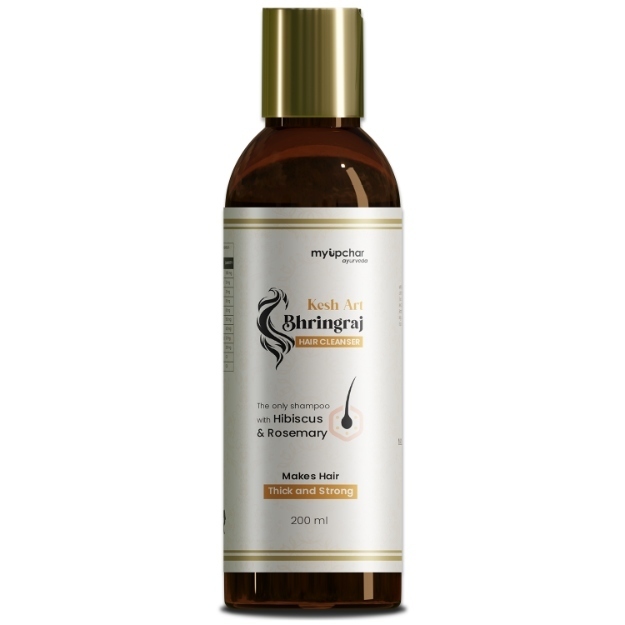Ingredients of Jain Triphala Guggulu (1000)
|
Amla
|
-
Drugs used to reduce swelling after an injury
-
Agents, which help to reduce oxidative stress, by scavenging free radicals
-
Drugs that stimulate appetite and are used in the treatment of anorexia and loss of appetite.
-
Drugs or medications that improve the process of digestion and food absorption.
-
Medicines that induce defaecation by softening stools and easing bowel movement.
-
Substances that increases secretion of gastric juice which is beneficial in stimulating the digestive system.
|
|
Guggul
|
-
Drugs which can lead to pain alleviation without having an effect on conscious levels
-
Agents that reduce inflammation or swelling caused due to an injury or infection.
-
Agents which help in reducing free radical activity and preventing oxidative stress and damage
-
Agents that reduce blood flow to an injury site by constricting blood vessels.
|
|
Haritaki
|
-
Agents or substances that are used to suppress inflammation (swelling).
-
A substance that can inhibit the oxidising effect of free radicals in living cells.
-
Substances that improve digestive processes.
-
Agents that eases the passage of stools and promotes bowel movement, used for the treatment of constipation.
|
|
Pippali
|
-
Drugs which can lead to pain alleviation without having an effect on conscious levels
-
Drugs used to reduce swelling after an injury
-
Agents, which help to reduce oxidative stress, by scavenging free radicals
-
Drugs that stimulate appetite and are used in the treatment of anorexia and loss of appetite.
-
Drugs that stimulate the release of digestive enzymes and aid in improving digestion.
|
|
Baheda
|
-
Substances that scavange the singlet oxygen molecules in the body.
|
Jain Triphala Guggulu (1000) Benefits
Jain Triphala Guggulu (1000) is used to treat the following -
Jain Triphala Guggulu (1000) Dosage
This is the usual dosage recommended in most common treatment cases. Please remember that every patient and their case is different, so the dosage can be different based on the disease, route of administration, patient's age and medical history.
| Age Group |
Dosage |
| Adult |
- General:
Use prescribed amount
- Before or After Meal:
After Meal
- Single Maximum Dose:
2
Tablet
- Preferred way of taking:
Warm Water
- Dosage Form:
Tablet
- Dosage Route:
Oral
- Frequency:
OD (once a day)
- Course Duration:
ongoing
|
| Geriatric |
- General:
Use prescribed amount
- Before or After Meal:
After Meal
- Single Maximum Dose:
2
Tablet
- Preferred way of taking:
Warm Water
- Dosage Form:
Tablet
- Dosage Route:
Oral
- Frequency:
OD (once a day)
- Course Duration:
ongoing
|
Jain Triphala Guggulu (1000) Side Effects
No side effects of Jain Triphala Guggulu Tablet have been reported in the medical literature. However, you should always consult your doctor before using Jain Triphala Guggulu Tablet.
Jain Triphala Guggulu (1000) Related Warnings
-
Is the use of Jain Triphala Guggulu (1000) safe for pregnant women?
No research has been done regarding the safety of Jain Triphala Guggulu Tablet for pregnant women. Therefore, it cannot be said if Jain Triphala Guggulu Tablet is safe during pregnancy.
Unknown
-
Is the use of Jain Triphala Guggulu (1000) safe during breastfeeding?
No research work has been carried out till date on effect of Jain Triphala Guggulu Tablet on breastfeeding women. So it is not known whether taking Jain Triphala Guggulu Tablet will cause side effects or not.
Unknown

-
What is the effect of Jain Triphala Guggulu (1000) on the stomach?
Using Jain Triphala Guggulu Tablet does not have any harmful effects on the stomach.
Safe

-
Is the use of Jain Triphala Guggulu (1000) safe for children?
The effect of Jain Triphala Guggulu Tablet on children is unknown because research on this has not been done yet.
Unknown

-
Can I take Jain Triphala Guggulu (1000) with alcohol?
Due to lack of research, there is no information about the side effects of taking Jain Triphala Guggulu Tablet with alcohol.
Unknown

-
Does Jain Triphala Guggulu (1000) cause drowsiness?
Jain Triphala Guggulu Tablet does not cause dizziness or drowsiness, so you can drive a vehicle or operate machinery also.
No
-
Is this Jain Triphala Guggulu (1000) habit forming or addictive?
There is no evidence on the habit-forming effects of Jain Triphala Guggulu Tablet
No
How to Take Jain Triphala Guggulu (1000)
You can take Jain Triphala Guggulu (1000) with following:
-
-
Can I take Jain Triphala Guggulu (1000) with LukeWarm Water?

Lukewarm water is absolutely safe to accompany Jain Triphala Guggulu (1000).
-
-
Can I take Jain Triphala Guggulu (1000) with Warm Water?

Warm water can improve the effectiveness of Jain Triphala Guggulu (1000); you should take the medicine with warm water.
This medicine data has been created by -
Dr. Braj Bhushan Ojha BAMS, Gastroenterology, Dermatology, Psychiatry, Ayurveda, Sexology, Diabetology
10 Years of Experience
X



















